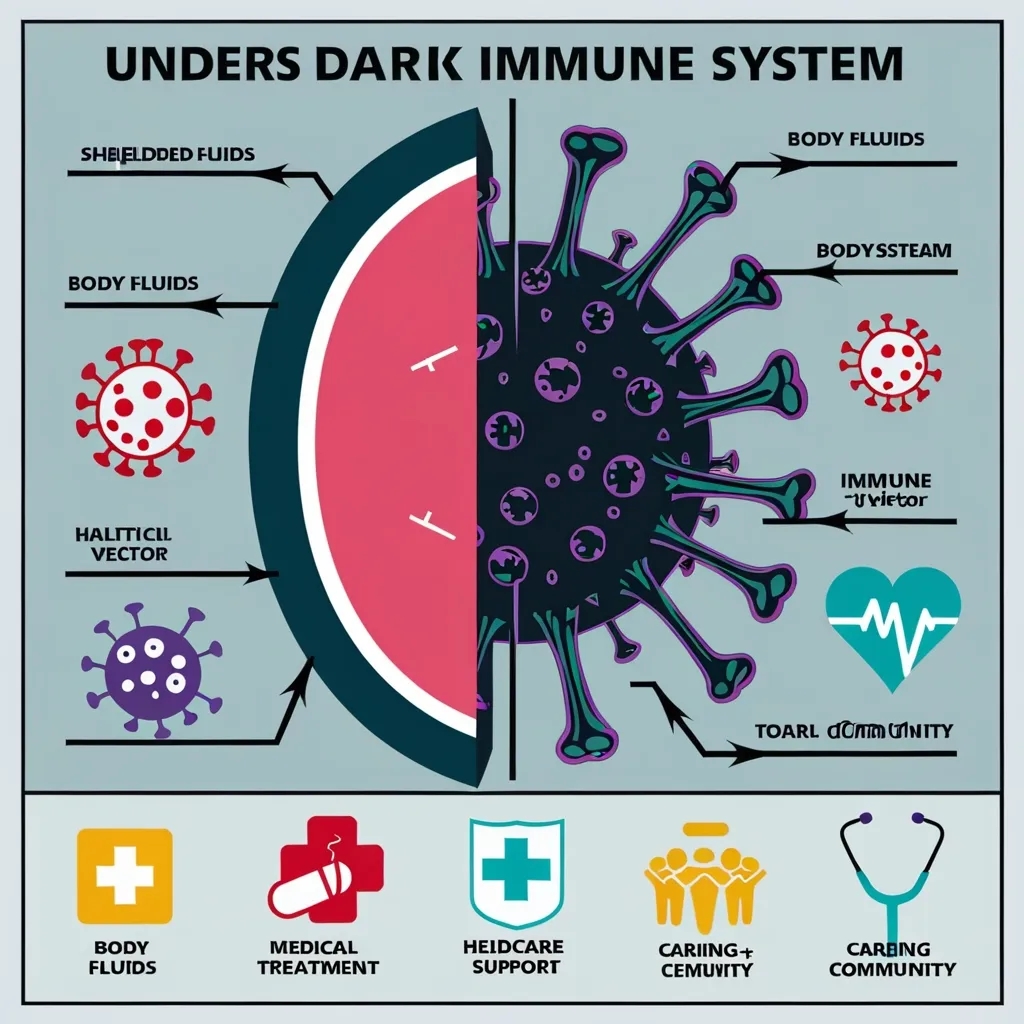HIV, or the human immunodeficiency virus, is a tricky virus that’s impacted millions globally. This virus takes aim at the immune system, particularly the CD4 cells (T cells), which are the body’s defenders against infections. When these cells are down, the body’s shields are compromised, making way for various diseases and infections.
HIV tends to spread through specific body fluids such as blood, semen, vaginal fluids, rectal fluids, pre-seminal fluid, and breast milk. The virus most commonly spreads through unprotected vaginal or anal sex and sharing needles or syringes. Mothers can also transmit HIV to their babies during pregnancy, childbirth, or breastfeeding if they aren’t on the right treatment.
HIV symptoms can be all over the place and may vary depending on how far along the infection is. In the early stages, known as acute HIV infection, folks might feel like they’ve got the flu. Imagine dealing with fever, headaches, aching muscles and joints, sore throat, swollen lymph glands, rash, diarrhea, weight loss, cough, and those unpleasant night sweats. This phase hits around 2 to 4 weeks after the virus enters the body and can last from a few days to several weeks. But here’s the kicker: many don’t show any symptoms initially.
As the infection shifts into the chronic stage or clinical latency, the virus keeps brewing in the body quietly, and many might still feel completely fine. This stealth mode can go on for years, all the while chipping away at the immune system. Without treatment, this gradual wear and tear eventually leads to AIDS, the final stage of HIV.
AIDS, or acquired immunodeficiency syndrome, is the most severe phase. Here, the immune system is struggling so hard it can’t fend off infections or cancers that a healthy body would typically handle with ease. Symptoms of AIDS can be devastating: severe weight loss, frequent fevers, intense night sweats, persistent diarrhea, and swollen lymph glands. Plus, the risk of contracting serious infections like pneumonia, tuberculosis, and certain cancers skyrockets.
While there’s no magic cure for HIV, antiretroviral therapy (ART) has changed the game in treating it. ART means taking a combo of meds that keep the virus in check and drop what’s called the “viral load” in the blood to undetectable levels. This not only boosts the health and quality of life for those with HIV but also slashes the risk of them passing the virus to others.
The catch is sticking to ART religiously. Skipping doses or halting treatment can cause the virus to become resistant to drugs, making the therapy less effective. Regular check-ins with healthcare providers are a must to ensure the treatment is on point and to tackle any side effects or other health issues promptly.
Preventing HIV is crucial to curbing its spread. Properly using condoms during sex and never sharing needles or syringes are rock-solid ways to dodge infection. Then you’ve got PrEP (pre-exposure prophylaxis) and PEP (post-exposure prophylaxis). PrEP is a daily med for those at high risk of catching HIV to help keep the virus at bay. On the flip side, PEP is an emergency med taken after possible exposure to HIV to head off the virus before it takes hold.
Testing for HIV early is a game-changer. The only surefire way to know if someone has HIV is through a blood test that looks for virus antibodies. If the test comes back positive, kicking off treatment ASAP is critical to managing the infection and dodging complications. Sometimes, follow-up tests are needed because it can take a bit for the antibodies to show up in the blood.
Living with HIV means embracing a detailed game plan that includes medical treatment, lifestyle tweaks, and emotional backup. Staying on ART, living healthily, and getting regular medical check-ups can help people with HIV live long, healthy lives. Support systems - think social workers, counselors, and support groups - are vital for dealing with the emotional, social, and financial punches this disease throws.
Navigating life with HIV/AIDS isn’t simple, but by getting a grip on how the virus spreads, noticing its symptoms, sticking to treatment, and embracing prevention methods, the impact of HIV/AIDS can be dramatically reduced. Early testing and getting diagnosed early are key to starting treatment swiftly, while ongoing support is essential for staying healthy and well. With the right combo of treatment and support, folks with HIV can lead long, vibrant, and fulfilling lives.






